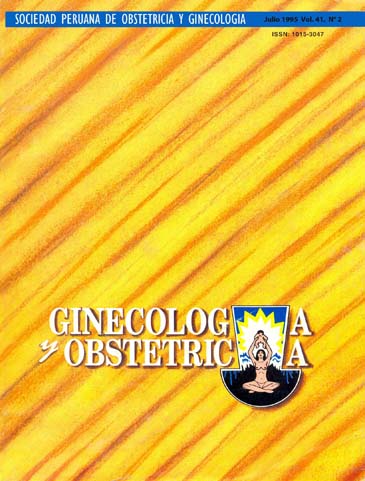Retardo de crecimiento intrauterino.
DOI:
https://doi.org/10.31403/rpgo.v41i1717Abstract
The intrauterine fetal growth retardation (IUGR) represents 1 to 7% of all deliveries in countries like ours and ¡s caused by malnutrition, pregnancy induced hypertension, poverty, low pregestacional weight, short intergenesic intervals, maternal complications. Preterm delivery and perinatal morbidity and mortality are more frequent. Decreased levels of interleukin 3, stimulant growth factors, receptors of epidermal growth factor, and increase of catecholamines, corticoids, and other fetal steroids have been found. The latter three increase to improve the hypoxemic circulation, maintain glucose delivery to heart and brain and for lung maturation. Placenta in IUGR shows thinning, infarction and decreased levels of angiotensine II, atrial natriuretic peptide, glucose, HPL, estriol, progesterone, and receptors of growth factors. Immune feto placental system ¡s affected, with presence of cytotoxic antibodies, antiphospholipid autoantibiodes, acute atherosis of the placenta and decrease of the mother´s antibody blocking activity. Diagnosis of IUGR requires a detailed obstetrical exam, ultrasound, biophysical profile, doppler velocimetry and maternal serum alpha-fetoprotein. Low dose aspirin would be useful in severe preclampsia of early beginning that ¡s considered to end much before term. Management of IUGR and the type and chronology of fetal birth will depend on maternal and fetal condition and gestational age; at this time, we can obtain newborns with favorable conditions after 32 weeks of gestation.Downloads
Download data is not yet available.
Downloads
Published
2015-07-31
How to Cite
Pacheco Romero, J. (2015). Retardo de crecimiento intrauterino. The Peruvian Journal of Gynecology and Obstetrics, 41(2), 18–27. https://doi.org/10.31403/rpgo.v41i1717
Issue
Section
Artículos Especiales
















